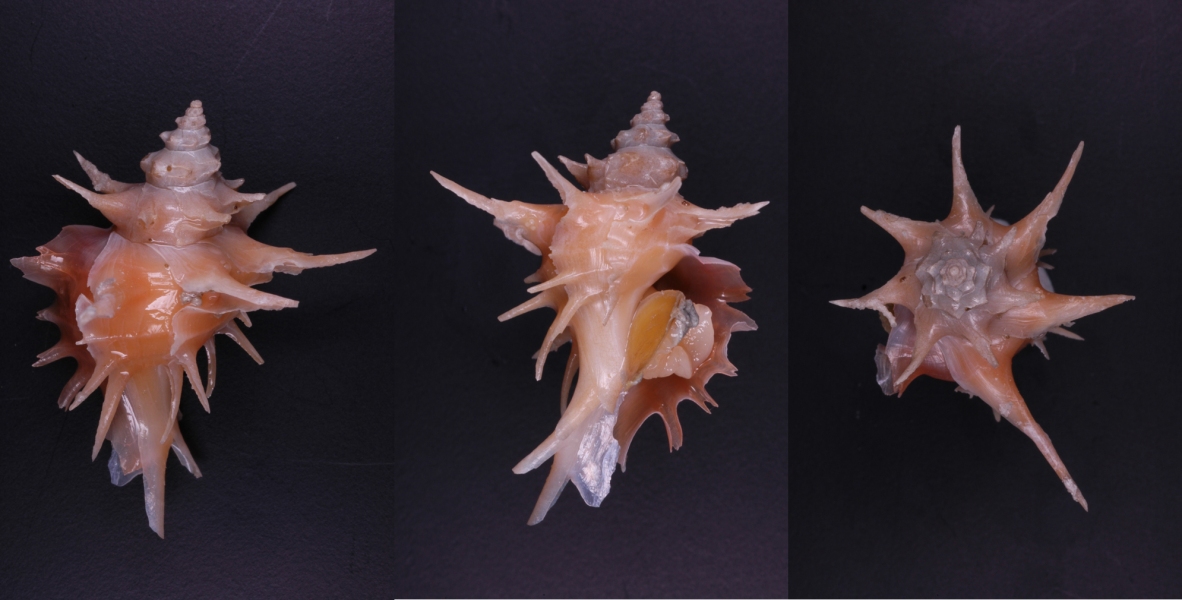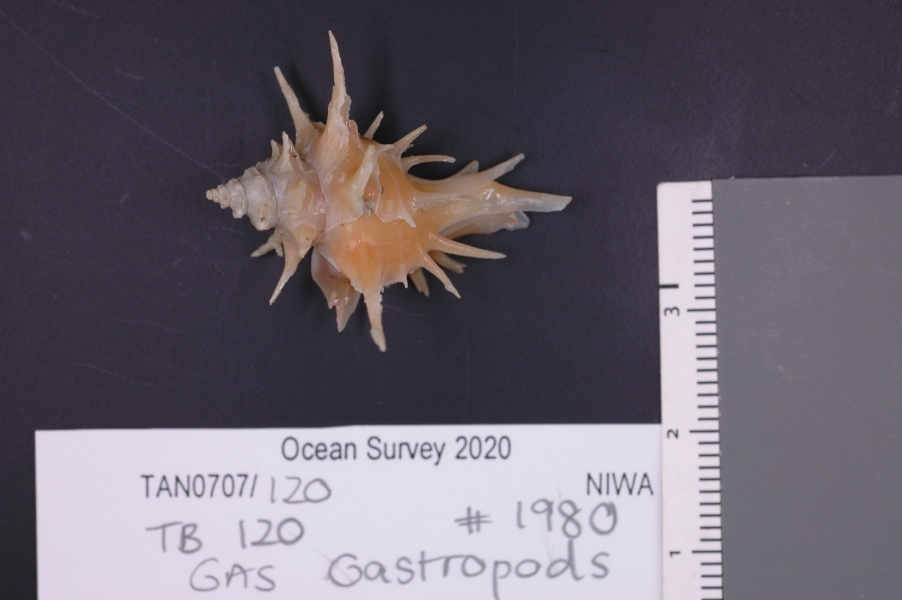You might occasionally come across this long-spined beauty, the spiny murex or Poirieria zelandica, washed up at the beach, arguably one of our most impressive shells (we wouldn’t want to be seen to be biased, so we are quoting Steve de Cook’s comment in his book ‘New Zealand coastal marine invertebrates, vol 1’).
It is fashioned with a series of spines all around its shell which gives it a most ornamented and delicate appearance. Apparently, the appearance differs according to where the animal lives, with those animals in shallower waters having shorter spines than those in the deep waters and those in muddy substrates with more slender spines than those on sandy substrates.
The long spines of its shell are a spiky deterrent against fish who might fancy it as a meal (other animals use the same defences, see the crab examples we brought you in CotW 20)
The spiny murex is endemic to the New Zealand region and occurs all around the islands, from the Three Kings to Stewart Island, from the low intertidal to 540 m. It is an active predator that drill holes into the shells of other molluscs with their radula, and by secreting an acid that softens the shell of their prey that sometimes can be found latched onto baited fishing lines and hauled to the surface.
It even made it onto a New Zealand stamp (issued in the late 1970s). View the stamp here.
And it is known in the fossil record of the New Zealand region since nearly 5 million years ago:
Muricidae
The Muricidae, the murex family, is one of the largest snail families. Their spiny and varied shells make them very popular with shell collectors. To give you an impression this shell collector has impressive drawers full of muricids with many beautiful species (find the Poirieria specimen!).


